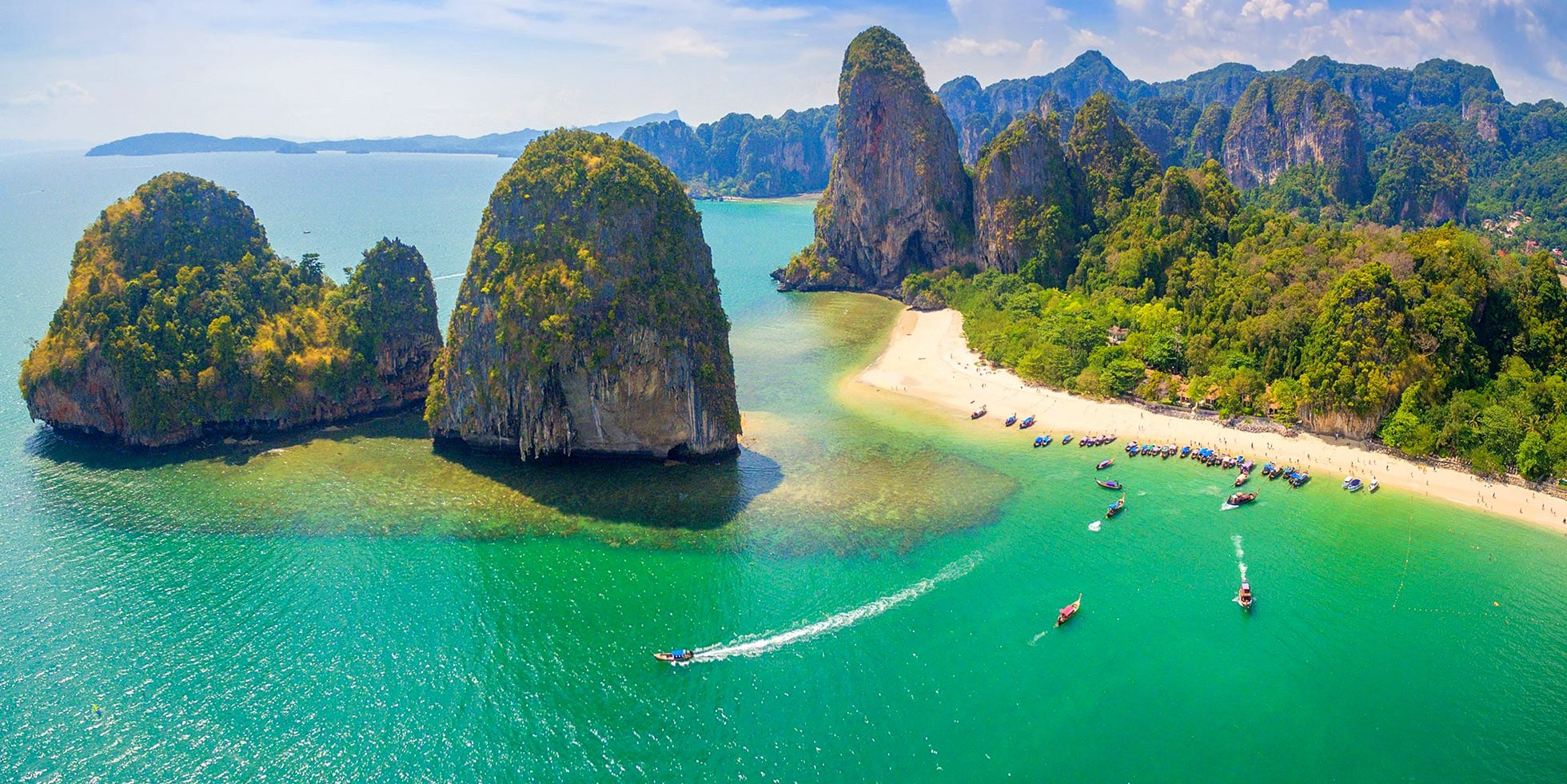Pai
Pai, located in the mountainous Mae Hong Son Province of northern Thailand, is a small town that has captured the hearts of travelers with its serene landscapes and laid-back atmosphere. Once a quiet village, Pai has evolved into a beloved destination for those looking to escape the hustle and bustle of the city and immerse themselves in nature and relaxation.
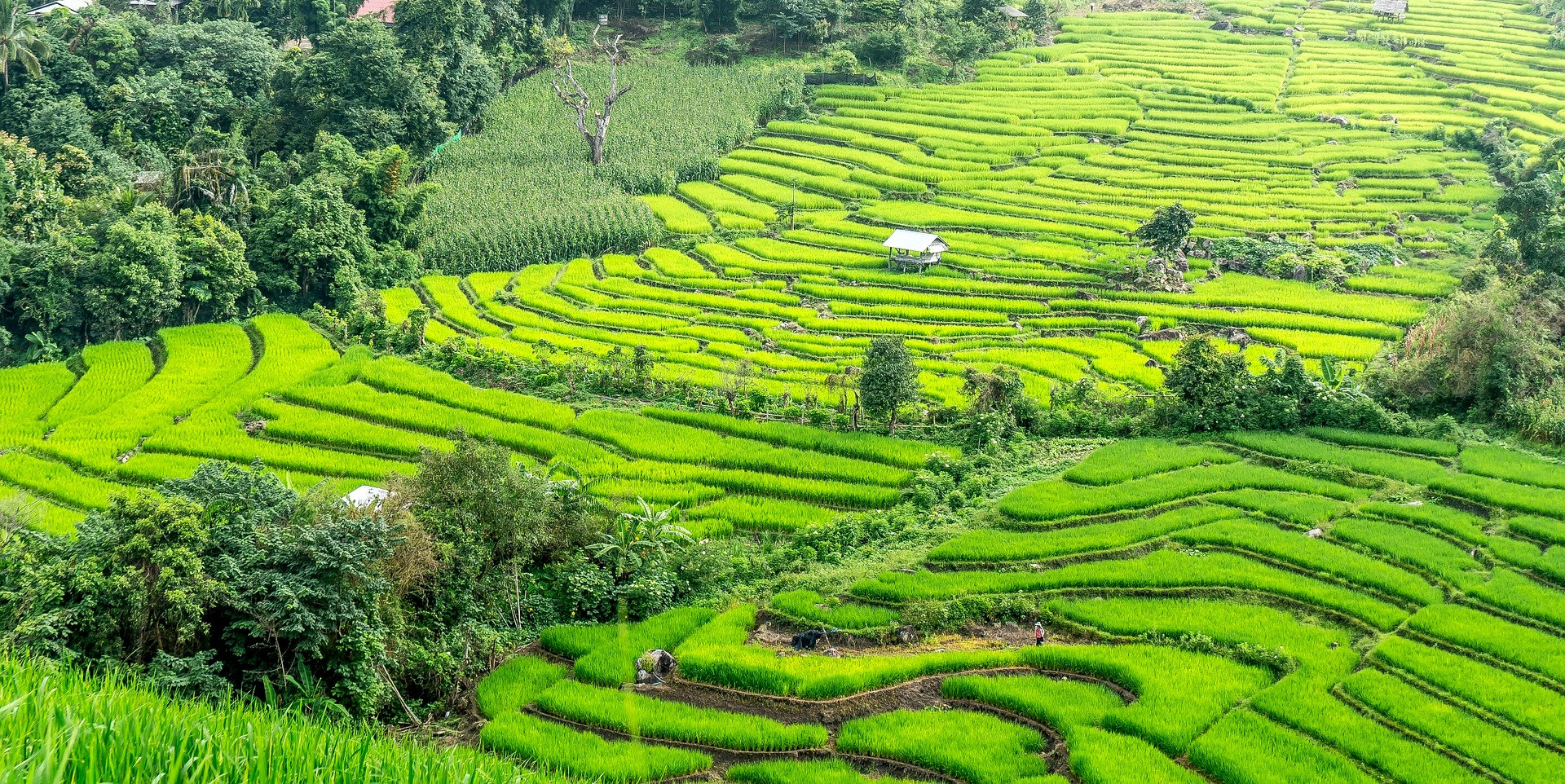
What Makes Pai Special
-
Scenic Natural Beauty: Surrounded by mountains, Pai offers stunning views and a cool climate that is a refreshing change from Thailand’s typically tropical weather. The area is rich with natural attractions, including waterfalls like Mo Paeng and hot springs such as the Tha Pai Hot Spring, where visitors can enjoy a relaxing soak surrounded by lush greenery.
-
Vibrant Arts and Music Scene: Pai has developed a unique cultural scene with a mix of Thai and Western influences. The walking street market is a hub of activity where local artisans sell handmade crafts, and musicians play live performances, creating a lively atmosphere that draws visitors from around the world.
-
Adventure Activities: For the more adventurous, Pai offers a range of activities such as white water rafting, hiking, and mountain biking. The Pai Canyon, known for its stunning vistas, provides an excellent spot for sunset views and is a popular place for trekking.
-
Relaxed Lifestyle: Pai's laid-back vibe is perhaps its biggest draw. Many visitors who come planning to stay for a few days end up staying for weeks, drawn by the slow pace of life and the friendly community.
-
Culinary Delights: Pai also boasts a thriving culinary scene, offering an array of food options, from traditional Thai cuisine to international dishes. Street food stalls, riverside restaurants, and vegan cafes cater to all tastes and dietary preferences.
How to Get There: Pai is most commonly reached from Chiang Mai. The journey by road takes about three hours and takes you through winding mountain roads with breathtaking views. A minivan service is a popular choice among travelers, or you can rent a motorbike for a scenic drive.
Pai is a perfect blend of natural beauty, cultural richness, and adventure, making it an essential stop on any journey through Thailand’s hidden gems. Whether you’re looking for relaxation, culture, or outdoor activities, Pai offers a little something for every traveler.
Trang Islands
The Trang Islands, nestled in the crystalline waters of the Andaman Sea in southern Thailand, are a stunning archipelago that offers tranquility and untouched natural beauty. Known for their lush landscapes, vibrant coral reefs, and pristine beaches, the Trang Islands remain relatively under the radar compared to Thailand's more commercialized tourist destinations. This makes them an ideal retreat for those seeking serenity and a chance to connect with nature.
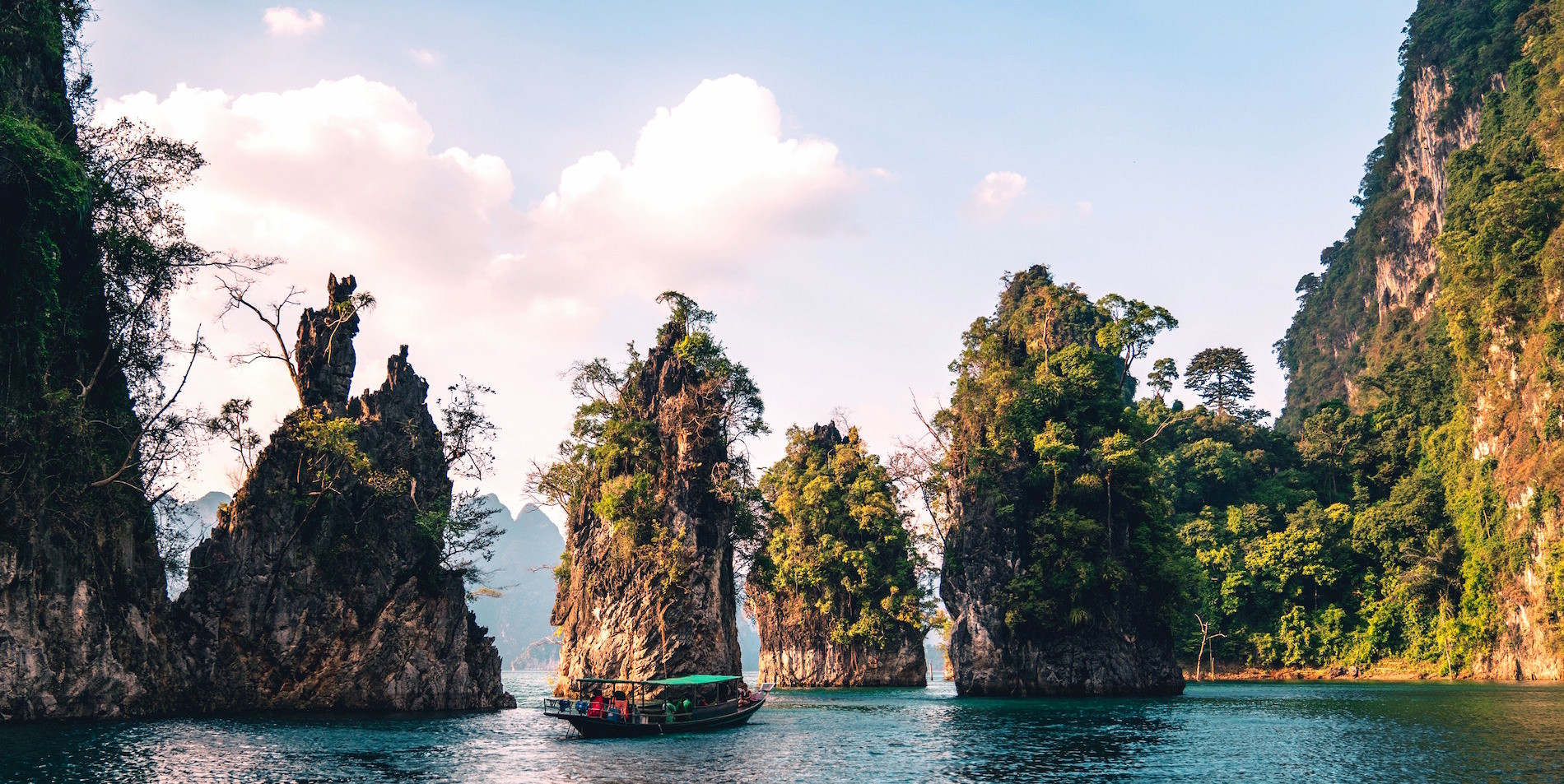
What Makes the Trang Islands Special
-
Spectacular Beaches: The islands boast some of the most beautiful beaches in Thailand, with powdery white sand and clear blue waters. Popular islands like Koh Kradan and Koh Mook offer secluded shores where you can relax without the crowds found in more popular beach destinations.
-
Vibrant Marine Life: The Trang Islands are surrounded by stunning coral reefs, making them a fantastic spot for snorkeling and diving. The underwater world here is alive with a diverse range of marine life, including colorful fish, sea turtles, and even whale sharks during certain times of the year.
-
Emerald Cave on Koh Mook: One of the most famous attractions in the Trang Islands is the Emerald Cave (Tham Morakot) on Koh Mook. Accessible only by swimming through a dark, narrow cave, visitors are rewarded with a hidden lagoon surrounded by high cliffs and lush vegetation.
-
Cultural Insights: The local communities on the Trang Islands are a blend of Thai and Sea Gypsy cultures, offering visitors a glimpse into their unique traditions and lifestyles. The islands are also known for their festivals, especially the Trang Underwater Wedding Ceremony, which is a unique event that attracts couples from around the world.
-
Island Hopping Opportunities: With numerous islands to choose from, island hopping is a popular way to explore the diverse landscapes and seascapes of the Trang archipelago. Each island has its own character and charm, from the bustling local life on Koh Libong to the serene beauty of Koh Ngai.
How to Get There: The Trang Islands are accessible via the Trang Province on the mainland, which has its own airport. From there, visitors can take a short drive to one of the many piers and continue by boat to the islands. The most common entry points are from the town of Trang or the more southern town of Krabi.
The Trang Islands offer a rare opportunity to experience some of Thailand's most beautiful but less frequented tropical paradises. Whether you're an avid diver, a beach lover, or simply looking for a peaceful escape, the Trang Islands provide a stunning backdrop for an unforgettable getaway.
Kamphaeng Phet Historical Park
Kamphaeng Phet Historical Park, part of the UNESCO World Heritage site that also includes the historical parks of Sukhothai and Si Satchanalai, is a treasure trove of historical significance and serene natural beauty located in the Kamphaeng Phet province of Thailand. This park is an exceptional destination for those interested in exploring the rich history and architectural heritage of Thailand away from the more crowded tourist spots.
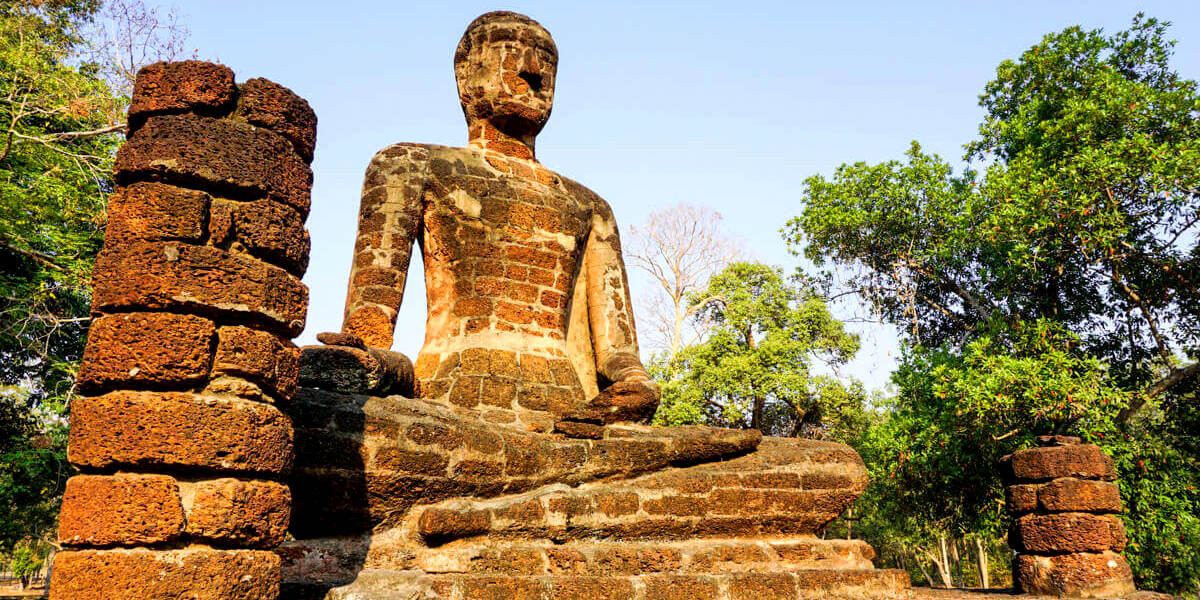
What Makes Kamphaeng Phet Historical Park Special
-
Rich Historical Significance: The park contains ruins that date back to the 14th and 15th centuries, when Kamphaeng Phet served as a strategic military outpost for the Sukhothai Kingdom. Its name translates to "Diamond Wall," referring to its historical role in defending the kingdom against potential invaders.
-
Unique Architectural Blends: The site showcases a fascinating blend of architectural influences. Here, visitors can see a mixture of Sukhothai and Ayutthaya architectural styles, along with notable influences from Ceylonese (Sri Lankan) design, particularly in the design of its stupa and temple decorations.
-
Serene Atmosphere: Unlike its more famous counterparts, Kamphaeng Phet Historical Park is usually less crowded, offering a more peaceful and introspective experience. The ruins are set among lush forests, adding a sense of tranquility and a picturesque quality to the visit.
-
Array of Historical Structures: The park is divided into two main zones: the central zone, which houses the majority of the temple ruins, including Wat Phra Kaeo and Wat Chang Rop, and the Nakhon Chum zone, which features older structures in a more rustic setting.
-
Educational Value: For history buffs and those interested in archaeology, the park provides insightful glimpses into the past civilizations that shaped the region. Information boards and guided tours available at the site help contextualize the ruins and their historical significance.
How to Get There: Kamphaeng Phet is located about 360 kilometers north of Bangkok. The easiest way to reach the historical park is by car or bus from Bangkok, which takes approximately 5 to 6 hours. The journey provides scenic views of the Thai countryside and is well worth the trip for those interested in historical and architectural exploration.
Kamphaeng Phet Historical Park is a hidden gem for those looking to delve deeper into Thailand's historical landscape, offering a tranquil and enriching experience that stands apart from the more well-trodden paths of its neighboring heritage sites. Whether you're a history enthusiast or simply someone who appreciates the quiet majesty of ancient ruins, Kamphaeng Phet offers a profound and picturesque step back in time.
Ban Rak Thai
Ban Rak Thai is a unique and captivating village in Northern Thailand, close to the border with Myanmar. Its name translates to "the village of loving the Thai," but it is also known as Mae Aw. Founded by Kuomintang (KMT) soldiers from China in the late 1940s after the Chinese civil war, Ban Rak Thai has retained a strong Chinese cultural influence that distinguishes it from other Thai villages.
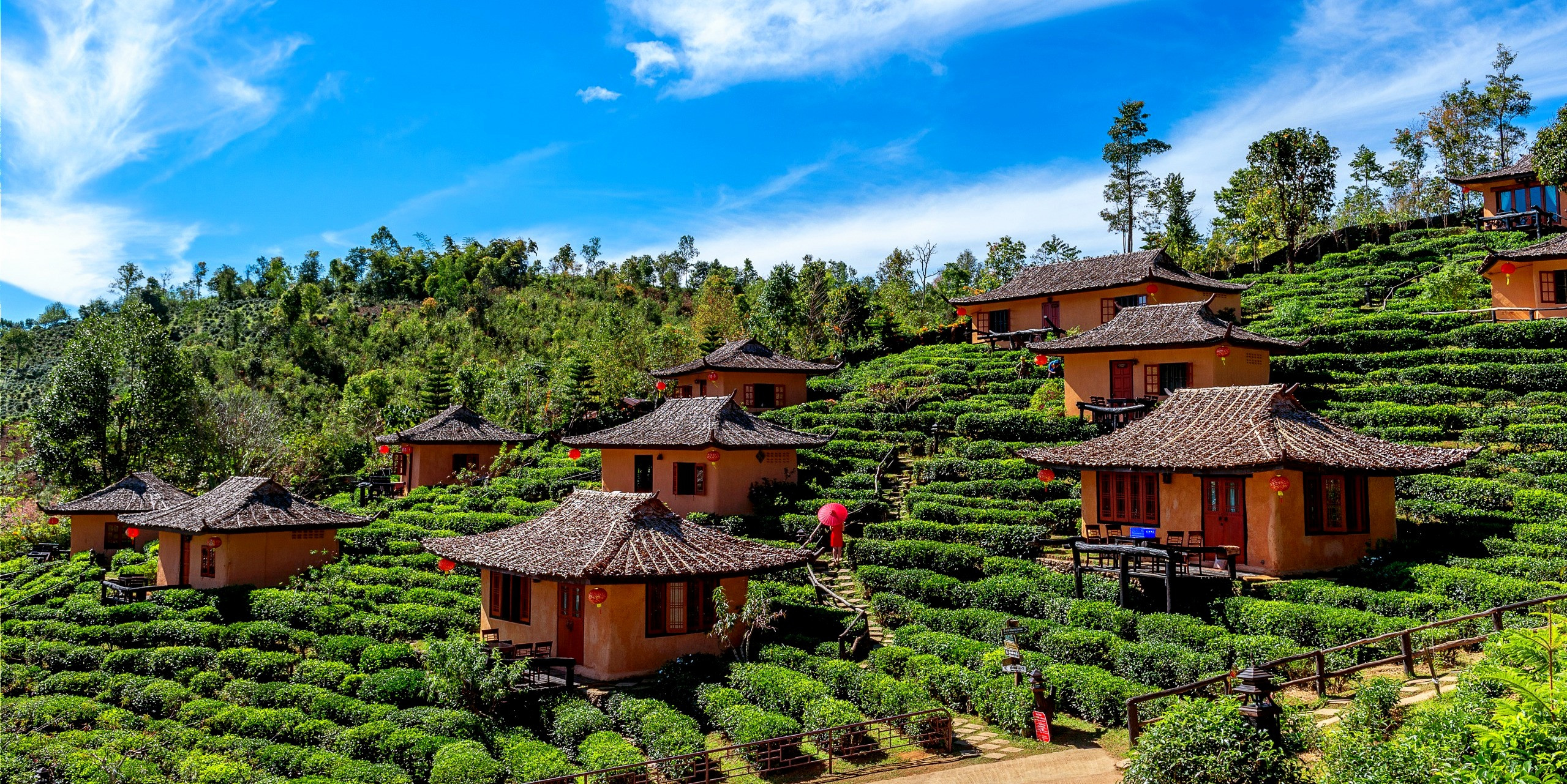
What Makes Ban Rak Thai Special
-
Cultural Heritage: The village's Chinese heritage is evident in its architecture, cuisine, and the Mandarin spoken by older residents. Visitors to Ban Rak Thai can experience a blend of Chinese and Thai cultures in a unique setting that feels like a step back in time.
-
Stunning Natural Beauty: Set amidst rolling hills and tea plantations, the village offers picturesque landscapes that are perfect for photography and nature walks. The serene lake at the heart of the village adds to its tranquil ambiance, making it an ideal spot for relaxation and reflection.
-
Tea Plantations: Ban Rak Thai is renowned for its high-quality Oolong tea, which thrives in the cool climate of the highlands. Visitors can tour the tea plantations, learn about the tea-making process, and sample freshly brewed teas—a must-do for tea enthusiasts.
-
Authentic Cuisine: The village's food offerings are a delightful mix of Thai and Yunnanese flavors. Local eateries serve specialties such as Yunnanese-style hotpot, Chinese tea leaf salads, and a variety of noodle dishes, providing a culinary exploration that is both unique and delicious.
-
Tranquil Atmosphere: Far from the hustle and bustle of Thailand's major tourist centers, Ban Rak Thai offers a peaceful retreat. The slow pace of life and the warm hospitality of the residents make it a perfect getaway for those looking to unwind and soak in a different aspect of Thai culture.
How to Get There: Ban Rak Thai is located approximately 44 kilometers from the town of Mae Hong Son. The journey involves a scenic but winding route through the mountains, which can be navigated by car or motorbike. The remote location adds to the village's charm and seclusion.
Ban Rak Thai is not just a destination; it's an experience that offers a glimpse into a unique cultural fusion and a slower, more deliberate way of life. For travelers looking to explore beyond Thailand’s typical tourist spots, Ban Rak Thai provides a rich cultural heritage, stunning landscapes, and a peaceful escape into nature.
Sangkhlaburi
Sangkhlaburi, nestled in the western part of Thailand near the Myanmar border, is a hidden gem that offers a profound cultural and scenic experience. Known for its remote beauty and the cultural diversity of its inhabitants, Sangkhlaburi is an enchanting destination that brings together Thai, Mon, Burmese, and Karen communities.
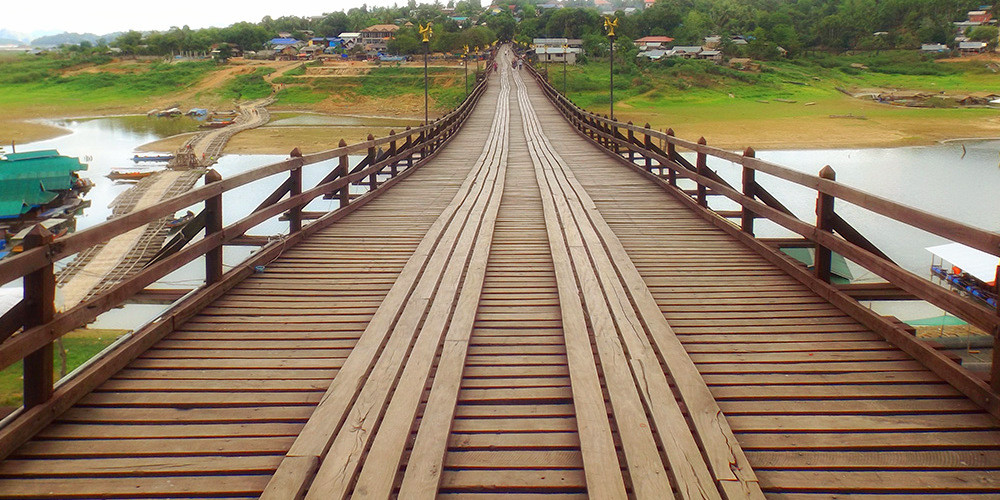
What Makes Sangkhlaburi Special
-
Cultural Diversity: Sangkhlaburi is a melting pot of cultures, each adding its own unique traditions, languages, and customs to the area. This diversity is reflected in the local food, festivals, and daily interactions, providing a rich tapestry of cultural experiences for visitors.
-
Iconic Mon Bridge: The wooden Mon Bridge, also known as Uttamanusorn Bridge, is Thailand’s longest wooden bridge and a focal point of Sangkhlaburi. It connects the Thai side of the town with the Mon village across the river and offers stunning views, especially at sunrise or sunset.
-
Underwater Temple: During the dry season, the water levels in the Vajiralongkorn Dam recede, revealing the submerged old Wat Wang Wiwekaram and other structures. This eerie and beautiful sight attracts photographers and curious visitors alike.
-
Volunteer Opportunities: Sangkhlaburi is known for its community projects and volunteer opportunities, especially those aimed at helping the local schools and orphanages. Many travelers come here not just to explore but to contribute, making their travel experience even more meaningful.
-
Scenic Beauty and Outdoor Activities: The surrounding landscapes are breathtaking, with lush forests, waterfalls, and the expansive reservoir offering ample opportunities for trekking, kayaking, and wildlife observation. The area's natural beauty provides a perfect backdrop for adventurous and serene activities alike.
How to Get There: Sangkhlaburi is located about 220 kilometers northwest of Kanchanaburi and is accessible by road. The journey from Bangkok can take up to 7 hours by car or bus, making it a perfect destination for a longer, more immersive trip away from the hustle of city life.
Sangkhlaburi is a destination that offers not just a getaway but an opportunity to engage deeply with a diverse community and spectacular natural environments. It’s ideal for those looking to experience a side of Thailand that is far removed from typical tourist experiences, providing deep insight into the harmony and challenges of a multicultural region.
Tips for Exploring Thailand's Hidden Gems
Exploring Thailand's hidden gems can be a rewarding experience, offering you a deeper insight into the country's diverse culture and stunning natural landscapes away from the usual tourist trails. Here are some tips to help you make the most of your journey through Thailand’s lesser-known treasures:
-
Plan Ahead But Stay Flexible: While it’s essential to have a plan, particularly when visiting remote areas, part of the charm of exploring hidden gems is the unpredictability and the spontaneous adventures you may encounter. Have a flexible itinerary that allows you to linger in places that capture your heart or adapt based on local recommendations.
-
Respect Local Customs: Many of Thailand’s hidden gems are in areas with distinct cultural practices and traditions. Take the time to learn about local customs and show respect. Simple actions like dressing modestly, and removing shoes before entering someone’s home, or temple can make a big difference in how you’re received by locals.
-
Hire Local Guides: In more remote or culturally complex areas, hiring a local guide can enhance your experience significantly. Local guides not only provide valuable insights into the history and culture but also help facilitate interactions with the local communities, ensuring you have a respectful and enriching visit.
-
Pack Appropriately: Remote areas might not have easy access to amenities. Pack essentials such as a good map or GPS device, a first-aid kit, insect repellent, sunscreen, and appropriate clothing for varying weather conditions. Also, remember to bring enough cash, as ATMs might be scarce.
-
Be Environmentally Conscious: Preserving the pristine nature of hidden gems is crucial. Always follow the principles of Leave No Trace—dispose of waste properly, minimize the impact of campfires, respect wildlife, and leave what you find.
-
Try Local Food: One of the best ways to connect with any culture is through its food. In less touristy areas, you’ll find authentic dishes that are true to the local taste and less adapted to Western preferences. Not only is this a chance to expand your culinary horizons, but it also supports local economies.
-
Learn Basic Thai Phrases: Knowing basic Thai phrases can go a long way, especially in areas less frequented by tourists. Simple greetings, thank you, and how to ask for directions can help bridge the language gap and endear you to the locals.
-
Capture the Moments: Bring a good camera to capture the beautiful landscapes and unique cultural moments. However, always ask for permission before taking photos of people or sacred sites.
-
Stay Connected: While the idea of going off the grid can be appealing, it’s wise to have some means of communication in case of emergencies, especially in remote areas. Local SIM cards with data plans are inexpensive and widely available throughout Thailand.
-
Embrace the Experience: Finally, keep an open mind. The beauty of exploring hidden gems lies in the unexpected. Embrace the quirks and challenges as part of the adventure, and you’ll leave with unforgettable stories and experiences.
By following these tips, you'll be well-prepared to explore the hidden gems of Thailand responsibly and enjoyably, ensuring a memorable adventure filled with discovery and respect for the incredible diversity and beauty of Thailand.
Ideal Time for Exploring Thailand's Hidden Gems
Exploring Thailand's hidden gems can indeed be a year-round adventure, but choosing the right season can enhance your experience, depending on what you want to see and do. Here’s a general guide to the best times to explore lesser-known areas of Thailand by season:
Dry Season (November to February)
-
Characteristics: This season features cool and dry weather, which is ideal for most activities, especially outdoor adventures like hiking, biking, and exploring historical sites. It's the most comfortable time for travel, with daytime temperatures pleasant and evenings cool, particularly in the northern and northeastern parts.
-
Advantages: Clear skies and minimal rainfall make this the peak season for tourism, offering ideal conditions for sightseeing and exploring both rural and urban areas. It's also a great time for photography, with lush landscapes following the rainy season.
Hot Season (March to June)
-
Characteristics: The weather during these months can be quite hot, especially in the central and northeastern parts. Temperatures often soar above 30°C (86°F), which can make midday outdoor activities challenging.
-
Advantages: If you can handle the heat, this season allows you to experience local life without the peak season crowds. It's a good time to enjoy cultural festivals, such as the Thai New Year (Songkran) in April, where you can join in traditional celebrations and water festivities.
Rainy Season (July to October)
-
Characteristics: This season is marked by frequent rains, high humidity, and cooler temperatures than the hot season. The intensity and frequency of rainfall can vary, with short, heavy downpours typically occurring in the afternoon.
-
Advantages: The landscapes are lush and vibrant, making this a fantastic time for nature lovers to visit. Waterfalls and natural parks are particularly beautiful, full of life and greenery. Tourist crowds are thinner, and prices for accommodation and activities can be lower, making it a good option for budget travelers.
Choosing the right season for your travels can help you enjoy Thailand's hidden gems with the right balance of adventure and comfort, tailored to your interests and travel style.
Beyond the well-known tourist routes, Thailand's hidden gems promise a rich and varied travel experience. Every little treasure in Thailand offers a special narrative and an unforgettable experience, whether you&'re basking in the still beauty of unspoiled landscapes, exploring the rich tapestry of cultural diversity, or enjoying distinctive culinary pleasures. Every season has its unique set of attractions and difficulties—from the pleasant, dry times ideal for outdoor activities to the lush, vibrant landscapes of the rainy season. Grab the chance to view Thailand differently; every trip into its less traveled regions offers personal development and a more profound link with nature and society. Thinking ahead of your trip about the seasons, local customs, and practical advice will help you to get the most of your experience. Every trip to Thailand's off-the-beaten-path treasures adds to a narrative of wonder and exploration; you are more than only a visitor.
FAQs for Exploring Thailand's Hidden Gems
Q: What is the best time to visit Thailand's hidden gems?
A: The optimal time to visit varies based on your interests. The cool season (November to February) is typically best for outdoor activities due to the comfortable weather. For lush landscapes and fewer crowds, consider visiting during the rainy season (July to October).
Q: Are there specific health precautions to take when traveling to these areas?
A: Yes, ensure you're up-to-date with recommended vaccinations such as Hepatitis A and B, Typhoid, and Tetanus. Always carry mosquito repellent and stay hydrated, particularly during the hotter months.
Q: What should I pack for a trip to Thailand's hidden gems?
A: Essential items include lightweight clothing, sturdy walking shoes, rain gear, sun protection, a basic first aid kit, and any personal medications.
Q: How can I respect local cultures while visiting these areas?
A: Dress modestly, particularly in temples and rural areas. Learn basic Thai phrases to show respect to locals, and always ask for permission before taking photos of people or private properties.
Q: Is it safe to travel alone to these hidden gems?
A: Thailand is generally safe for solo travelers, but standard safety precautions are recommended. Stay informed about the areas you visit, secure your belongings, and avoid less safe areas at night.
Q: How can I minimize my environmental impact while exploring these destinations?
A: Follow "Leave No Trace" principles: properly dispose of waste, respect wildlife and natural habitats, and limit the use of single-use plastics. Opt for eco-friendly tours and accommodations where possible.
Q: What kind of transportation is recommended for getting around?
A: Transportation options vary by area. Renting a scooter or car can offer flexibility in remote areas. For longer distances, local buses or trains are recommended to lessen your environmental impact.
Q: Are there English-speaking guides available?
A: Yes, English-speaking guides are often available, especially when booking through tour operators like Relax Getaways. Employing local guides not only enriches your experience but also supports the local economy.
Q: Can I use credit cards, or should I carry cash?
A: Credit cards are accepted in major cities and tourist areas, but many smaller places and hidden gems prefer cash. Always have some local currency on hand for small transactions and entry fees.
Q: What are some must-try local foods?
A: Try regional specialties: Khao Soi in Northern Thailand, fresh seafood in the Trang Islands, and local snacks from markets. Each area offers unique culinary delights worth experiencing.
For the Nepal tour, please click here.
If you are looking for different kinds of Nepal Tours or Trekking Packages, feel free to contact us.
